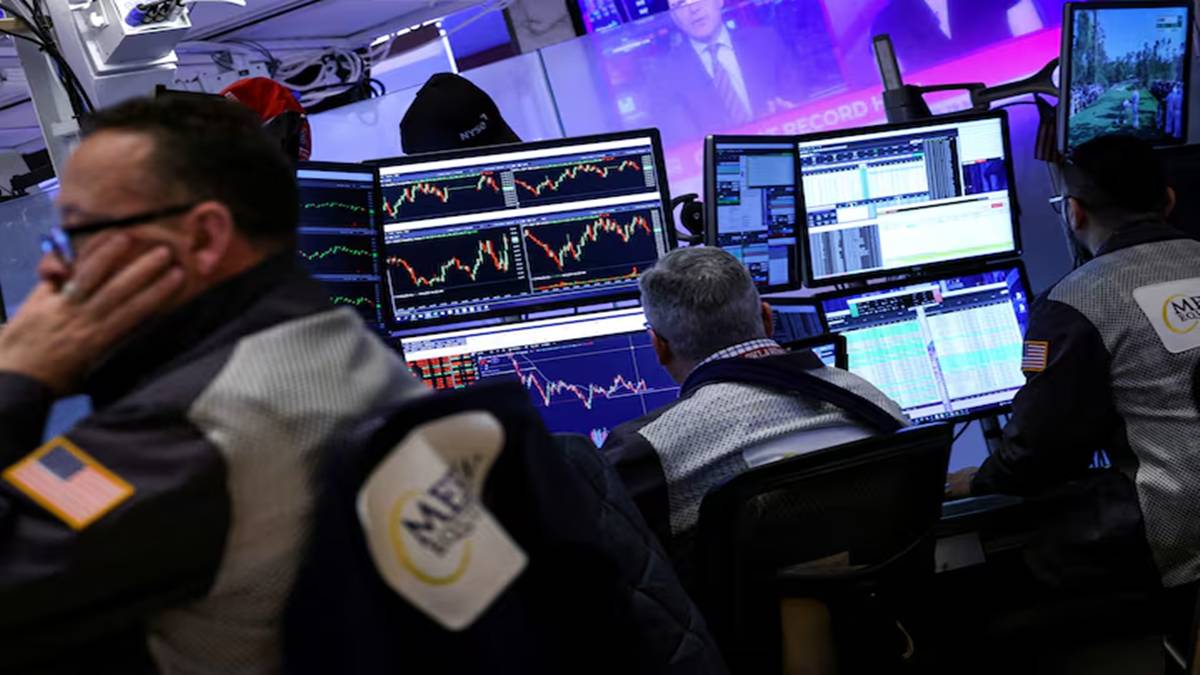Wall Street experienced a notable surge on Friday, marking a positive end to a week filled with market turbulence influenced by U.S. President Donald Trump‘s ongoing trade disputes. As major banks unveiled their first-quarter earnings, investors were reassured by Boston Federal Reserve President Susan Collins, who indicated that the Fed is ready to intervene if necessary. The optimism helped propel all three major U.S. stock indexes to significant gains.
Market Performance Overview
After a week characterized by sharp fluctuations, all three indexes closed higher compared to the previous Friday. The chaos stemmed from a temporary tariff pause on European goods and escalating trade tensions between the U.S. and China. Notably, the S&P 500 experienced its widest weekly trading range since March 2020, highlighting the current volatility.
- S&P 500: +1.81% (up 95.31 points to 5,363.36)
- Dow Jones Industrial Average: +1.56% (up 619.05 points to 40,212.71)
- Nasdaq Composite: +2.06% (up 337.15 points to 16,724.46)
Greg Bassuk, CEO of AXS Investments, remarked, “Investors are navigating a tug of war, seeking any signs that the prolonged uncertainty haunting the market might ease.” He further stressed that the current climate of uncertainty and volatility could signal more turbulence ahead.
Earnings Season Kickoff
The first quarter’s earnings reports began on a positive note, with major financial institutions like JPMorgan Chase, Morgan Stanley, and Wells Fargo exceeding profit expectations. However, concerns about a potential economic slowdown due to trade conflicts tempered enthusiasm. Analysts now predict an 8.0% growth in S&P 500 earnings for the first quarter, a decline from the earlier forecast of 12.2%.
Economic Indicators and Consumer Sentiment
Recent economic data suggests inflation is beginning to stabilize, as evidenced by a 0.4% drop in the Producer Price Index last month. Nonetheless, consumer sentiment deteriorated, with one-year inflation expectations rising to 6.7%, the highest since 1981. Alongside Collins’ reassurances, New York Federal Reserve President John Williams stated that the U.S. economy is not heading into a phase of high inflation combined with low growth, and the Fed will work to prevent “stagflation.”
Sector Performance Highlights
Every sector within the S&P 500 closed in positive territory, with materials and technology sectors leading the way in percentage gains. The market dynamics were reflected in the advancing issues, which outnumbered decliners on the NYSE by a ratio of 2.47-to-1.
- New Highs: 60
- New Lows: 341
On the Nasdaq, 2,948 stocks advanced while 1,467 declined, demonstrating a 2.01-to-1 ratio favoring the gainers. The S&P 500 recorded one new 52-week high and five new lows, while the Nasdaq Composite saw 21 new highs against 147 new lows. Trading volume on U.S. exchanges hit 19.19 billion shares, slightly above the average of 18.74 billion shares over the preceding 20 trading days.
Future Projections
In a recent client note, Citi adjusted its year-end target for the S&P 500 down to 5,800, from a previous estimate of 6,500, citing tariff impacts and signs of an economic slowdown as key factors. This revised outlook underscores the cautious sentiment prevailing among investors amid ongoing market fluctuations.
Overall, Wall Street’s performance on Friday reflects both resilience and the complex interplay of economic indicators and geopolitical tensions, setting the stage for what lies ahead in the financial landscape.










